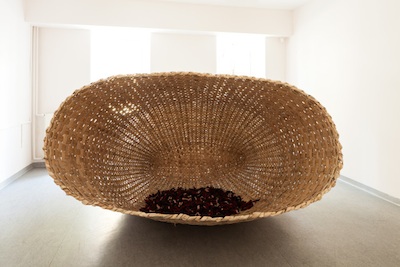
_______________________________________________________________
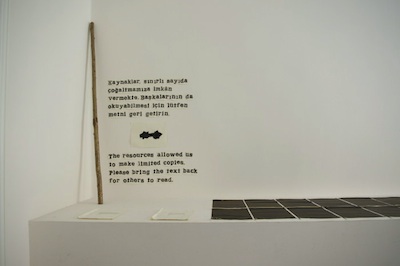
_______________________________________________________________
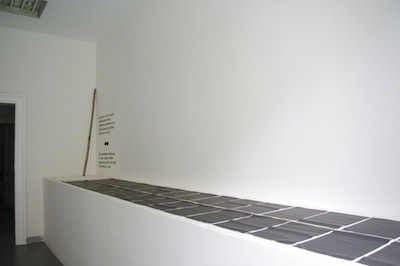
_______________________________________________________________
Iz Öztat, Who Carries The Water, 2015, with Fatma Belkis, 14th Istanbul Biennale,
For the Public Domain
Who Carries The Water has been shaped by what Iz Öztat and Fatma Belkis
have learned from the autonomous, anonymous and dissenting ways of living
articulated during the struggles against the construction of run-of-the-river
hydroelectric power plants in numerous valleys of Anatolia since 1998. In the
installation, they display an account of their journeys in the valleys through
some of the practices and materials they encountered there. The san yazma
(yellow kerchief) -used by the women of the Loc Valley, and a symbol of the
struggles since 2010 - was the point of departure for articulating a language
of wood-printed patterns and symbols. Wielded by the women when they are
confronted with armed forces and with the corporations, and used extensively
in daily life, the hazelnut sticks are the main supporting element of the installation.
The artists felt the necessity to write a text based on dialogues as a way to bring
together experience and literature. They worked with processes and materials that
reflect the values articulated and protected by the struggle. Becoming acutely
aware of what it takes to produce electricity, they preferred manual processes
in their production that do not require electric power.
______________________________________________________________
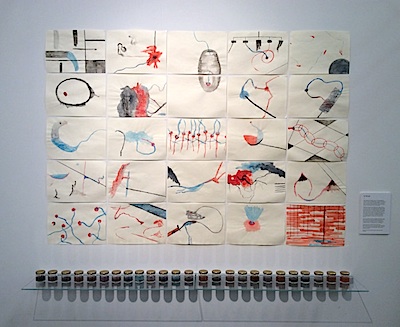
_______________________________________________________________
Iz Öztat, In The Rivers North of The Future, 2015,
The Moving Museum I The Armory Show
With Sculpture for Rainwater Harvest, Iz Öztat appropriated 0.80 m2 of
surface from Sishane Park's rainwater harvesting area during The Moving
Museum exhibition. In the course of these 47 days, the sculpture accumulated
82 liters of rainwater. To create the work, Öztat used approximately half a
liter of the water she harvested.
______________________________________________________________
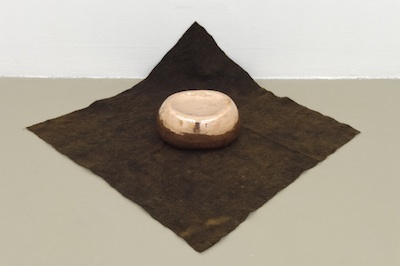
Portal, 2010 (Copper, digital audio)
_______________________________________________________________
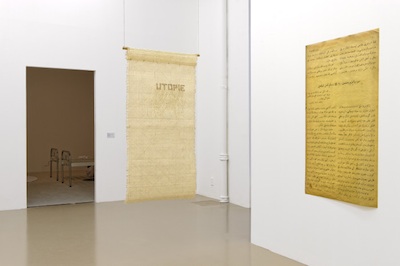
Posthumous Production Series (Wayward Script, Utopie), 2013 (Cane webbing, esparto grass)
_______________________________________________________________
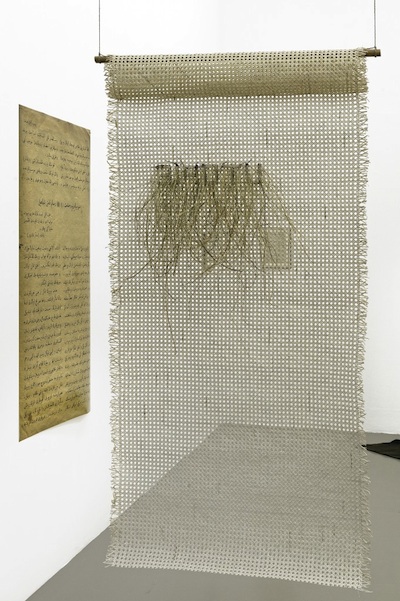
Posthumous Production Series (Wayward Script, Utopie), 2013 (Cane webbing, esparto grass)
_______________________________________________________________

Posthumous Production Series (Inherited Weights, Zisan), 2012, Polyamid
_______________________________________________________________
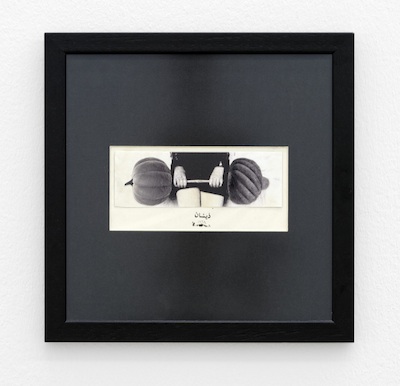
Untitled, 1928 (Collage) Zisan
_______________________________________________________________
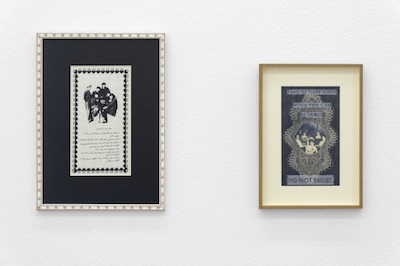
On the left: Decleration of Women's Gang
- Being a wife and a mother are neither commands of nature, nor sacred duties.
- Compulsory conscription should be abolished and children should not be granted
to the nation.
- Faith in morals and the nation do not free women, instead they instrumentalize women
for societal stability.
- Ethnic nationalism is not patriotism.
- Political rights cannot be gained by voting or entering the parliament in a
single party regime.
- Education should contribute to personal freedom and will, instead of the
motherland and nation.
Right: Sketch for an anti-conscription poster from Zisan's Utopie Folder 1915 - 1917
_______________________________________________________________
Iz Öztat, Every name in history is I and I is other , 2013
Titled after Zisan’s autobiography, Every name in history is I and I is other conjures
a suppressed narrative of the Ottoman past and the top-down transformations
imposed by the Turkish Republic through an untimely collaboration. Zisan, who is a
recently discovered historical figure, a channeled spirit and an alter ego, appears with
selected fragments from her archive. In the Posthumous Production Series, Iz Öztat
takes on Zisan’s work and claims an anarchic lineage that goes back to a queer Ottoman
woman, who drifted with political commitments, coincidences and obscure obsessions.
_______________________________________________________________
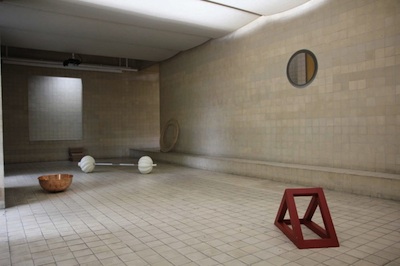
_______________________________________________________________
Iz Öztat, I am not dealing with triangle, square and circle, 2012
The title of the work, is a quotation taken from the discussions in the gallery,
which revolved around the potential of geometric forms as a universal language
versus their rootedness in local heritage. The four objects that are basic geometric
forms with references to artworks, tools and materials of everyday life. They are
precariously placed and can be manipulated by the audience. In the video, a
fragmented female figure emerges like a ghost from the tiled walls, which have
been there since the conception of the gallery, and tries to reach the knowledge
embodied by the objects through an animistic quest.
Iz Öztat’s solo show was part of the series BENGÜ BURAK VOLKAN ALP
ELMASIZ curated by Nazli Gürlek between September 2011-June 2012 in honor
of the 35th anniversary of Maçka Sanat Galerisi, which has been dedicated to
showing conceptual tendencies since its conception in 1974.
_______________________________________________________________
|
_____________________
Iz Öztat
Selected Work
Biography/Exhibitions
_____________________
Iz Öztat performs on multiple fronts such as making, gathering, writing, translating, hosting and mediating. Although her work is dependent on the context within which it is produced, she returns to certain subjects: ideological connotations of display, self-reflexivity about the conditions of artistic production, the construction of subjective time maps and genealogies as a way to negotiate historiography. Her process usually begins with archival research and initiated dialogues, which manifests as an animistic quest into the potential of objects and materials in conveying knowledge. Once the idea materializes, she attempts to activate the installation through performative and dialogic encounters. Since 2010, she has been engaged in an untimely collaboration with Zi?an (1894 – 1970), who appears to her as a historical figure, channelled spirit and an alter ego.
Iz Öztat, born 1981, is an artist based in Istanbul and a BA honors graduate of Oberlin College and an MA graduate of Sabanc? University. She is currently a candidate for PhD in Art Practice at Yildiz Technical University, Istanbul. Selected solo exhibitions include Conducted in depth and projected at lengthat Heidelberger Kunstverein in Germany (2014) and Iz at Maçka Sanat Gallery in Istanbul (2012).Selected group shows includeRendez-vous 13 at the Institut d’art Contemporain in Lyon (2013), Here Together Now at Matadero Madrid (2013) andUnderconstruction at Apartment Project in Berlin (2012).
www.izoztat.com |
 |
 |